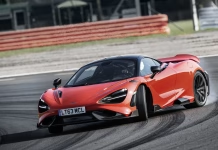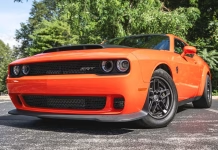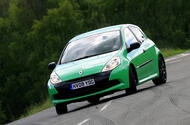Can Pilots Drink Coffee in the Cockpit? Exploring In-Flight Beverage Rules

Unleashing the Mini John Cooper Works on Yorkshire’s Wild Roads A Spirited Adventure Through...

Robin Hood's bay is where our road trip begins...We headed to North Yorkshire for a blast in Mini's boisterous new hot hatchback
A brisk Mini and a Great British adventure: a pairing to rival jam and cream or salt and vinegar. Yes, I might be hungry, which is why we’re starting in the implausibly picturesque Robin Hood’s Bay, a postcard illustrator’s dream ensconced in the North Yorkshire coastline.
The concept of destination road trips has been ascending for a while, none more famous than the North Coast 500, right at the tip of Scotland. Perhaps we’re all tempted to get stuck in but simply can’t find the time, and for many Autocar readers the rollercoaster roads of the North York Moors might prove a tad easier to reach.
Easier to plan, too, maybe. We’ve thrown out the A-Z and kept Google Maps intervention to the bare necessities, as photographer Max and I aim to get joyously lost in the verdant vistas that surround us. But not before shielding our chips from the marauding gulls and snapping a few pics beside the seaside, of course,
Robin Hood’s Bay itself is not a driver’s mecca; it is best accessed on foot from its outskirts, but boy is it worth it. Cobbled paths, dramatic staircases and idle fishing boats surround you while the dramatic North Sea laps just feet away if the tide has rolled in.
Farther up the coast you’ll find Whitby, with its storied vampiric abbey and goth conventions, while the unabashed old-school charm of Scarborough lies to the south. All three are tourist magnets, so a moment of clarity (and a lungful of sea air) in Robin Hood’s unique little bay before the hordes arrive is a great way to start our trip.

The latest Mini John Cooper Works quickly punctures our moment of zen, though, as its turbocharged 2.0-litre engine adds a cheeky flourish of revs on start-up. Its rather taut suspension is soon jiggling us over the humps and bumps of the urban Tarmac leading us out of town and into the wilds.
We’ve praised this car before on these pages, even if it pursues its performance with some wantonly rough edges. ’Twas ever thus with JCW-badged cars, but the vigour of their damping appears to have reached a whole new level here. Over a standard Cooper S the suspension uses bespoke springs and dampers, plus more negative camber on the front wheels, to more keenly point you into corners, while its four-cylinder ‘B48’ engine has 228bhp and 280lb ft peaks for 0-62mph in 6.1sec.
The big headline, however, goes to its gearbox. The JCW is now offered only with a seven-speed dual-clutch automatic ’box – yes, the manual Mini hot hatch is dead. Indeed, the manual petrol hot hatch as a whole.
My wistfulness is soon decimated by the madcap Mini’s turn of pace. Without the minor pause of a clutch dip and a flick of your wrist, it snarls forward insatiably, and you’ll encounter brief moments of wheelspin or torque steer if you try to deploy too much of its potency on cool or damp surfaces – there’s no clever differential set-up here to smooth the edges.
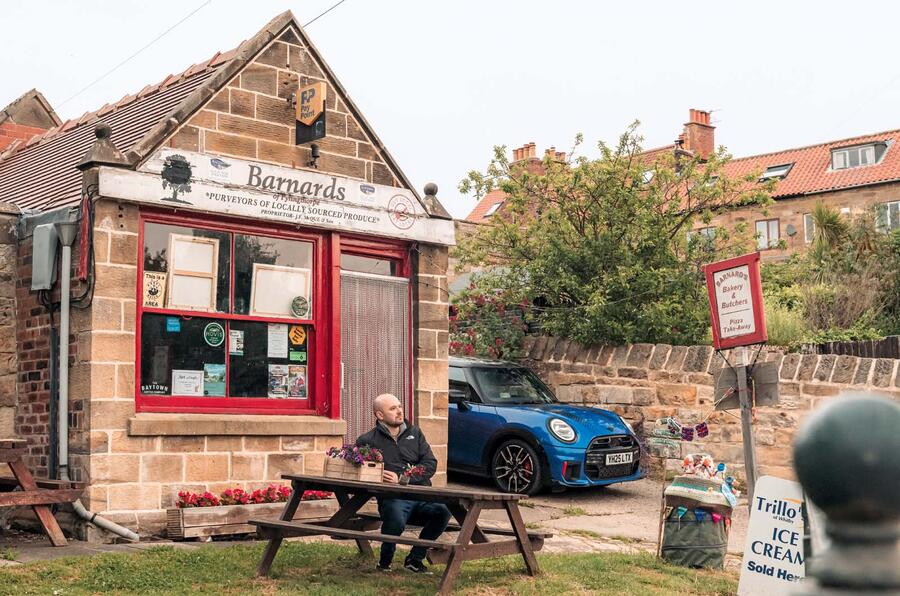
It’s a boisterous bucking-bronco of a car over the crests and into the dips of the roads that lead us inland, but it’s hard not to be enraptured by the experience. You’ve no choice but to get stuck in.
Our next stop lies 18 miles south, and it is an essential visit for any petrolheads in the area. Oliver’s Mount is England’s only road racing course that’s open to the public, and it’s a chance to pop the Mini between some painted kerbing with no need for a helmet or race boots.
The track hosted its first race in 1946 – a celebratory affair to welcome home the troops of World War II – and essentially morphs a tight and twisting park service road into a quite fearsome circuit. Its 2.43 miles span 10 corners, and in the heat of its motorcycle races, riders reach 150mph; repeated 30mph signs ensure our pace is much calmer today.
Yet with the grid markings upon its start/finish straight, its domineering control box and a roll of honour awash with Isle of Man TT legends, it won’t be long before your ears pick up the phantom buzz of highly strung engines and stratospheric rev limits in the air.
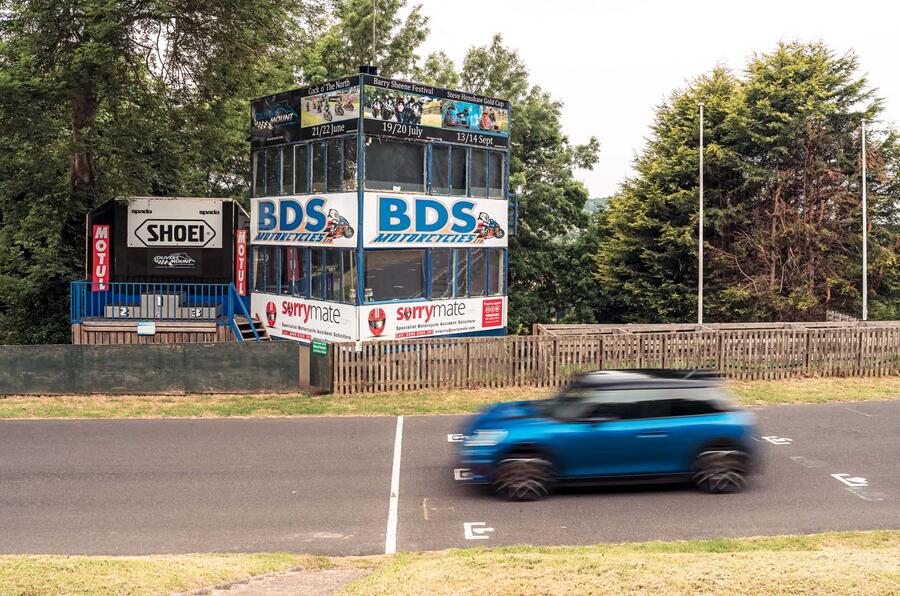
We simply have to indulge in a lap. Starting from the grid, we barrel straight into the supremely tight Mere Hairpin. TT hero and unlikely TV star Guy Martin describes notching back from fourth gear (and 130mph!) to tackle the first turn, so I channel some of his spirit with a rambunctious run through the JCW’s raucous first gear on exit.
The seven-speed ’box isn’t exactly the star of the show – I’m finding it desperately hard not to miss a manual – but a set of pleasingly short ratios means you can meaningfully flick-flack up and down its paddles at will. Oliver’s corners are a hedonistic mix, and its tree-lined sections through Sheene’s Rise and Drury’s Hairpin feel ominous in the context of the race speeds achieved through them – there’s perilously little run-off.
Those striped kerbs make this two-way road feel all too much like an actual racetrack today, so I work hard to keep my enthusiasm in check. Luckily the Mini is generous with its character – a euphemism for ‘blooming bolshy’ – at even these speeds, ensuring a sensibly driven lap still feels scintillating.
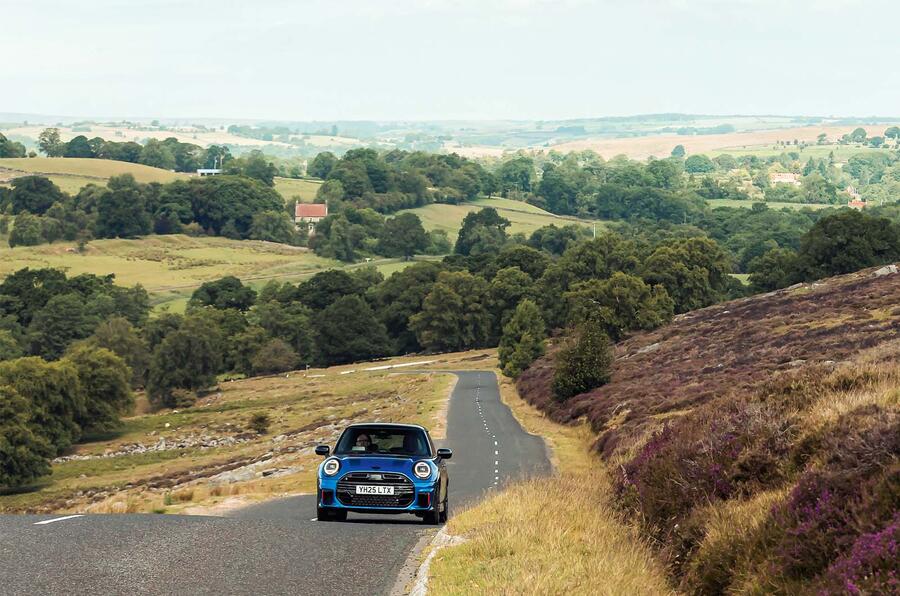
The famed Yorkshire spirit is alive and well up here too, an approaching runner zig-zagging to clear geese from the road to ease our progress. I suspect that doesn’t happen quite so often in London’s Royal Parks…
It would be easy to stay up here all day, Scarborough perched below us, but it’s the empty moorland roads inland that drew us here in the first place. So after a quick run past the town’s chintzy amusements and seafood shacks, we head off to explore. Not before being held up in an unlikely jam, though, our progress entangled with that of the Three Coasts Vintage Tractor Run.
Perhaps 550 miles between Liverpool and Whitby on one of these would make the Mini feel more urbane. Even pottering through traffic there are huffs and whistles from its engine and a choreographed popping of its exhaust in sportier drive modes.
While the sounds don’t always tally with the alacrity of its performance, the JCW offers a more bewitching character than its recently launched electric twin – whose extra 320kg and even sterner ride would make progress tough before any range anxiety had crept in.
Clear of our curious snarl-up, I drop a few gears and extend the Mini’s powertrain. Its muscular torque easily overcomes a kerb weight that looks portly in the context of its predecessors.
Out of town and with more forces working its damping, the ride doesn’t feel quite so uproarious, and it’s hard not to beam at the sight ahead: enveloped by the rolling hills and fields around us, the Tarmac dips and rises ahead in perfect harmony with the landscape.
The roads surrounding the brutalist structure of RAF Fylingdales are dreamlike – if you can avoid the trundling tour buses ready to swarm the Goathland tea rooms like wasps around a freshly garnished scone. Just watch out for the sheep…
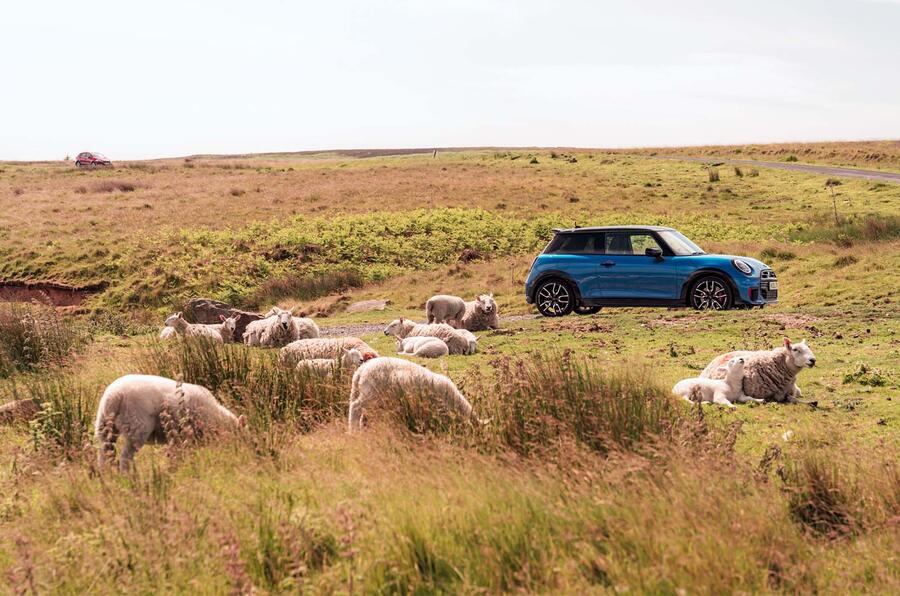
Perhaps a rip-snorting little Mini is a mite too brash for the beauty of the roads we’re on – a freshly polished classic MG or Healey might be more befitting of the scene we’ve entered. But the JCW’s dinky size and easily won performance quickly banish those worries. You can lean hard into its limits, feel grip come and go at both ends and start to work with its agility.
It’s nowhere near as nuanced as the very best of the hot hatch pack – oh, how we sorely miss the Ford Fiesta STs and Hyundai i20 Ns of this world – but it’s not short of spirit up here, and working around its rough edges brings its own unorthodox satisfaction.
The all-time great performance cars typically meet you at your level, enhancing and elevating you with them. This JCW falls into a somewhat more rough ’n’ tumble category of cars that demand you play along to their tune.
It’s a car that feels happiest and sharpest when you start to throw it around a bit, at which point its ragged character starts to make more sense. Modern Works Minis were always the brasher, more uncouth offerings in the hot hatch sector, of course, but the party around this one has emptied so rapidly – the much meeker Volkswagen Polo GTI is its closest ICE-powered rival – that the JCW now stands for resilience as much as for its rapscallion attitude.
There’s plenty of professionalism inside. Its interior is a bouquet of idiosyncrasy – as is the modern Mini way – but with a convincing tech overhaul and confident material choices. The vast OLED screen is a real standout, whatever you think of its dinner-plate dimensions and the fact that Apple CarPlay sits as a crude box among it.
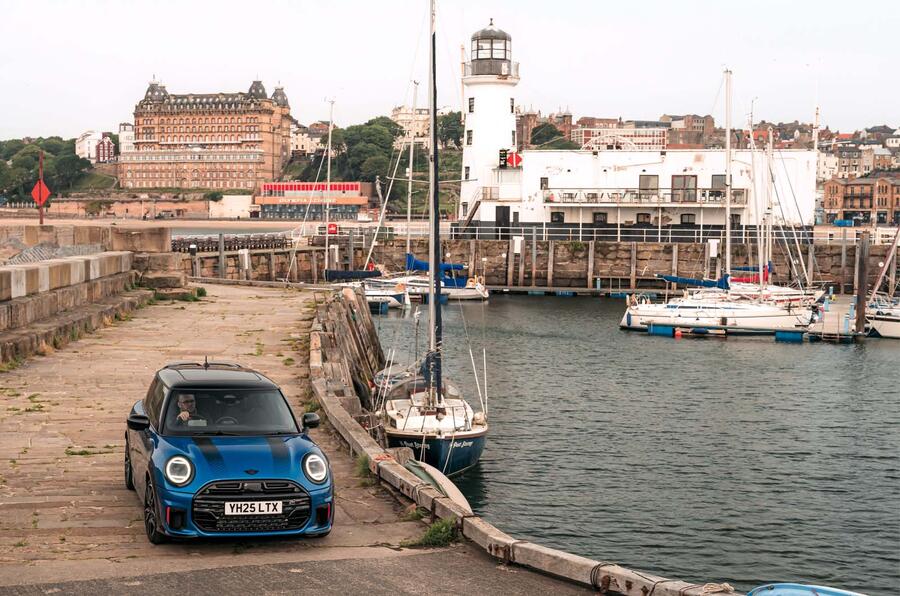
Mini’s sense of humour has never dimmed – indeed, it’s increasingly crucial in the face of swelling Chinese competition. A fresh highlight comes from your doubtless rare flicks into ‘Green’ mode, which animate either a hummingbird or cheetah on the screen depending on how efficiently (or otherwise) you’re driving.
A cute encouragement to amble even more gently through the quaint villages punctuating our route, even if our ideal gamification of the driving experience would be a good ol’ gearstick and three pedals.
It bests its electric sibling in a number of ways, more so on days such as these. It will be a good while before charging facilities will be extensive enough to allow the wanton exploration of the twisting roads, dinky lanes and amazing scenery that we’ve enjoyed today – however nice it might be to slink through North Yorkshire’s prettiest tableaux in reverential silence.
Jaunty seaside, sprawling moorland and a bonus (not so) hot lap: this is the perfect place to get intentionally, wonderfully lost. A punchy and pugnacious yet ultimately charming performance car slots neatly into the picture postcard.
McLaren Delays Electric Car Launch to Perfect Performance
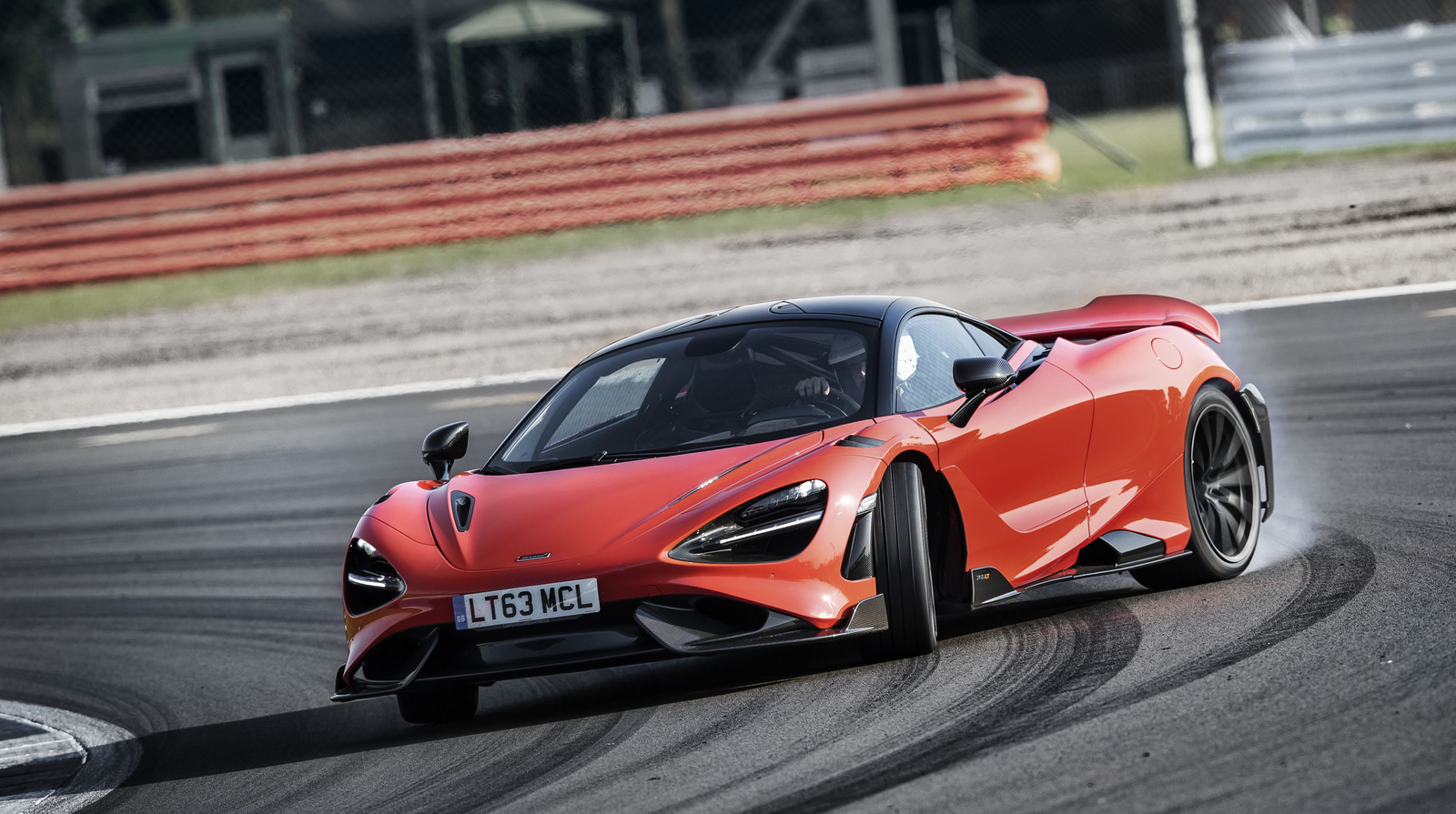
How Much Will This Nearly Stock 2023 Dodge Challenger SRT Demon 170 Sell For?

Cyber Attack Halts Land Rover Production as Hackers Disrupt UK Car Plants and Dealers
 No new Land Rover cars are able to be made or registered as manufacturer races to solve global system fault
No new Land Rover cars are able to be made or registered as manufacturer races to solve global system fault
Production issues at Jaguar Land Rover's Halewood plant, caused by a targeted cyber hack earlier this week, will last until at least Tuesday, it has been reported.
Workers have been told not to return to work until 9 September, the Liverpool Echo reports. Production at the site is understood to have been halted since 1 September.
It follows a cyber attack in which hackers claimed to have exploited a flaw in the British car maker’s IT system.
A notice sent to Halewood workers on 4 September stated: "Friday September 5 and Monday September 8: the leadership team has agreed that production associates will be stood down and will have hours banked in line with the corridor agreement.
"All colleagues are required to attend work as normal on Tuesday September 9 unless informed otherwise.”
Autocar understands the Solihull plant, where the Range Rover and Range Rover Sport are built, is also affected. JLR wouldn’t comment on the claims.
In an effort to combat the hack, JLR said it began “shutting down our systems” on Tuesday and is now in the process of rebuilding them. JLR was unable to confirm a timescale for the fix.
The issues are also affecting dealers, who are unable to order parts, can't code parts they do have to cars, and are unable – in some instances – to complete customer handovers.
In addition, they are having to manually register vehicles. This involves phoning the DVLA in each instance.
Autocar first reported the issues affecting JLR on 1 September, when dealers couldn't register new cars on 'new plate day' , traditionally one of the year's busiest for registrations.
JLR's public-facing website appears to be fully operational, including the car configurator.
Who has claimed responsibility?
On 3 September, Scattered Spider – the group that hacked Marks & Spencer in May, causing seven weeks of disruption and costing £300 million in lost operating profit – claimed responsibility for the attack on JLR.
Along with fellow hacking group Shiny Hunters, it claims to have obtained customer data after exploiting a similar flaw in JLR’s IT system, The Telegraph reports.
The claim was made on a Telegram messenger group, where a user linked to the hackers posted a screenshot of what appeared to show JLR's internal system.
A member of the group told The Telegraph that a well-known flaw in SAP Netweaver - third-party software used by JLR - was exploited to access the data.
US cyber agency CISA warned about the flaw earlier this year. An update for the software was released, but whether JLR applied it is unknown.
It's also not known what data was taken or if a ransom demand has been made.
JLR told Autocar in a statement on 3 September that “there is no evidence any customer data has been stolen”.
According to The Telegraph, the hacking groups are believed to be made up of teenagers from English-speaking countries.
Passenger Jet Flies Over Live Chinese Naval Exercise in Dramatic Air Traffic Exchange

How the Iconic 911 Keeps Porsche Thriving Amid Industry Turmoil
The Porsche 911 was name-checked as one of the models helping fuel Volkswagen Group’s growing order bank in western Europe at its recent half-year financial results.
A sports car now costing in excess of £100,000 even for a base rear-wheeldrive Carrera (just four years ago, it was a smidge over £80,000) may seem an odd model to call out for driving growth at the world’s second largest car maker, yet, 61 years after its introduction, the 911 is as crucial for Porsche as ever.
Almost one in six sold is still a 911, some 25,000 having found homes in the first half of 2025. That’s actually a small drop year-on-year but explained by a model changeover, and the order bank remains strong.
The 911 has outsold the combustion-engined Macan, Panamera, 718 Boxster/Cayman and Taycan, and only the Cayenne and electric Macan sit above it. In the UK, it’s only second to the Macan. Remarkable.
Necessary too, for the 911’s robustness is a rare bright spot for Porsche.
Oliver Blume, CEO of both the VW Group and Porsche (and you thought you were busy…) took questions on a pretty bleak present for Porsche ahead of its own results being published. There have been year-on-year declines in sales volumes, sales revenues, profi ts and operating margins, with the latter the scariest: Porsche’s margin is just 5.5%, down 65% year-on-year and akin to that of a moderately successful volume car maker. Given its price hike, you would expect the 911 to be doing plenty of heavy lifting within that overall margin too.
Blume, calm and measured, told me three things that are making the brand suffer: the collapse of the luxury market in China, import tariffs to the US and the slower than expected demand for EVs. The result has “put the business model of Porsche under pressure”.
Porsche has been hit more than most by tariffs in the US (all of its cars are imported to the US from Europe) and the Chinese market dynamic changes as “the US and China are by far the biggest markets for Porsche”.
In the case of China, Blume quoted a luxury market decline of 34% in 2024 and another 50% in the first half of this year. “Porsche lost a lot of volume,” he said – 28% so far in 2025, to be precise.
Porsche’s recovery plan includes investment in a major new model that extends beyond EVs and back towards combustion-engined cars in response to the EV slowdown. Alongside this is a huge cost saving programme that will save hundreds of millions of euros in costs and cut around 15% of its workforce by 2029.
Yet one thing won’t change: the 911. With such a strong order bank, expect the 911 to remain the shining light as Porsche looks to escape a turbulent period.
Excitement Builds for the 2025 Munich Auto Show: What Are You Looking Forward To?

Why Now Is the Perfect Time to Own a Legendary RenaultSport Clio Before They’re...
 Your last chance to buy the final naturally aspirated manual Renaultsport Clios for a bargain price is now
Your last chance to buy the final naturally aspirated manual Renaultsport Clios for a bargain price is now
It’s a curious thing with hot hatches – they’re much lusted after when they’re the cars of the moment and the best of their breed.
But when that moment has gone and the next superheated hot hatch arrives, they fade as fast as a tropical sun. They get used up until suddenly, there are hardly any left. And fewer still that you’d give drive-space to.
The X85 generation RenaultSport Clio has yet to reach the decimation phase, but its X65 predecessor has despite this car being the hot hatch to have in its day. You’ll occasionally find a crisp Clio 182 with low-ish miles. But these are the exception - most have been thrashed, trashed or crashed.
But there signs that its successor may not quite go the same way. A tempting trip through the classifieds reveals several that have clearly been pampered, come with all the right bits and have a heap of life left in them. So perhaps the X85 Clio RenaultSport is going to buck the hot hatch trend, allowing a decent number of coveted and cared-for examples to survive. High prices potentially make it too expensive to track-day these machines to oblivion.
That said, a track is where you best experience the superb handling of this car, especially if it’s equipped with the coveted Cup option. Though if you’re shopping for an X85, you need to know that there were two ways to acquire this confection. In its most extreme form, the Cup option was not only about recalibrating the springs and dampers for still greater agility, but also about paring weight, specifically 20kgs-worth.
To make that gain, Renault deleted the air conditioning, keyless entry and curtain airbags, and installed the lower-rent dashboard of the most basic Renault Clio, complete with steering column adjustable for rake only. You could order the air conditioning and curtain airbags as options, but not the higher-grade dash, reach adjustment or keyless entry.
You paid £1000 less for this version – a refreshing contrast to Porsche, which will charge you (loads) more for an RS with less, but better still was that the Cup chassis could be ordered with standard car. In this form the Clio weighed only 1.6% more, making this the optimal choice. But if you’re shopping, you need to be sure of what you’re getting.
And what was so special about the Cup suspension? It wasn’t as if the standard car shortchanged in the gripping, turning, swerving and stopping departments. But those reworked dampers and springs tightened the Renault’s body control, deepened its athleticism and sharpened your impression of the tyres’ intimacies with the road below. And all without ruining the ride. The steering could still have weighted up more informatively when you got some boldness on in a bend, but the Clio Renaultsport Cup was unquestionably top of the pile, not least because of the lift-off, tuck-in liberties you could take with this wonderfully game chassis, and a revvy engine to goad you on.
It’s still hard to beat even now. One major reason for that is that its paddle-shift only, five-door successor doesn’t quite continue the magic, despite Dieppe’s effortful fettlings. But the main reason is that the X85 Clio RenaultSport remains one of the best-handling front-drive cars of all time. With luck, that will mean plenty of survivors.
Philadelphia’s Public Transit Crisis: Who Will Pay for the City’s Lifeline?




